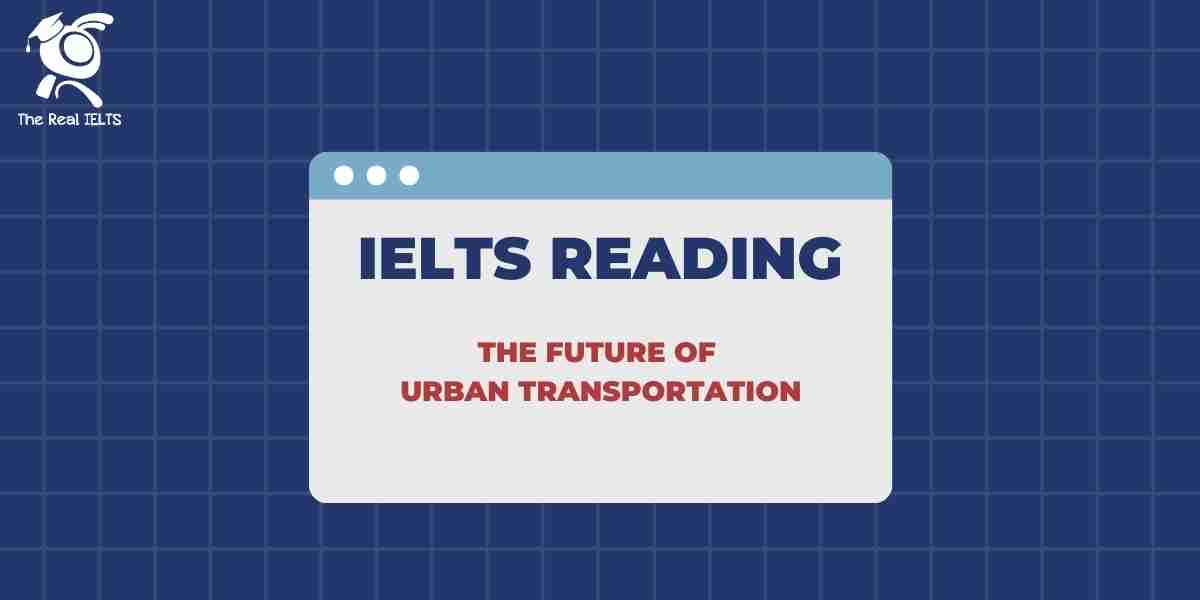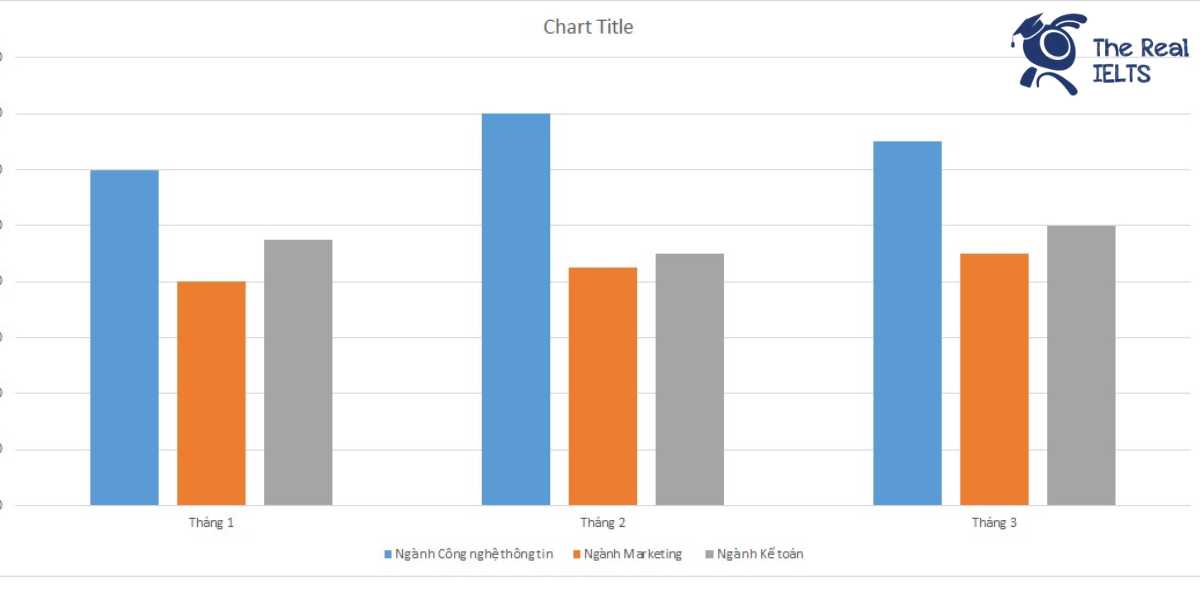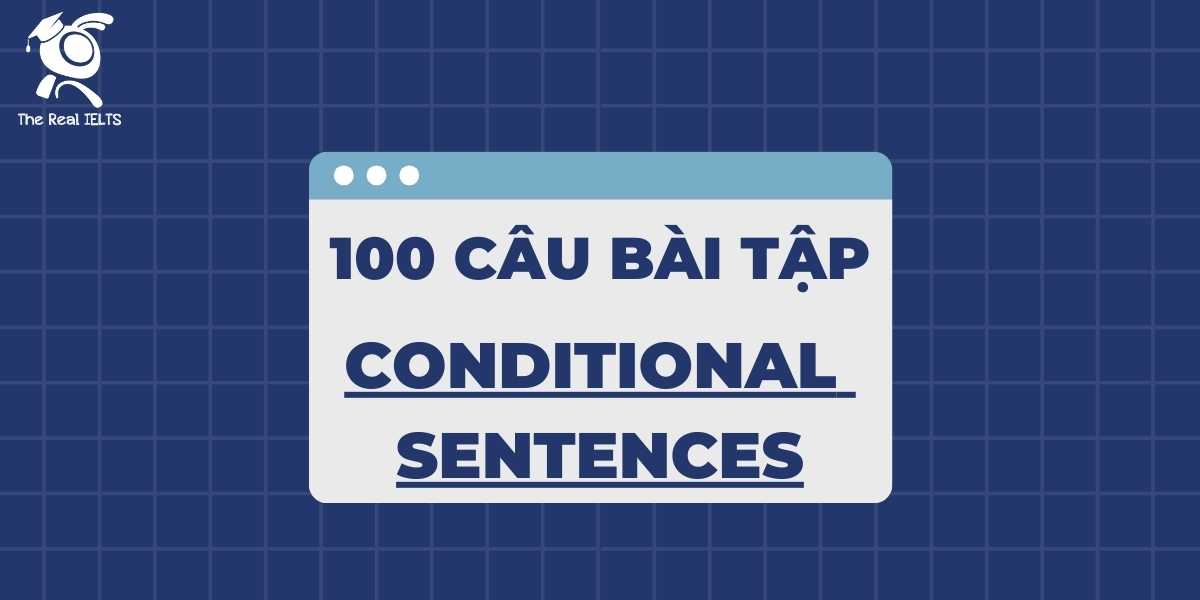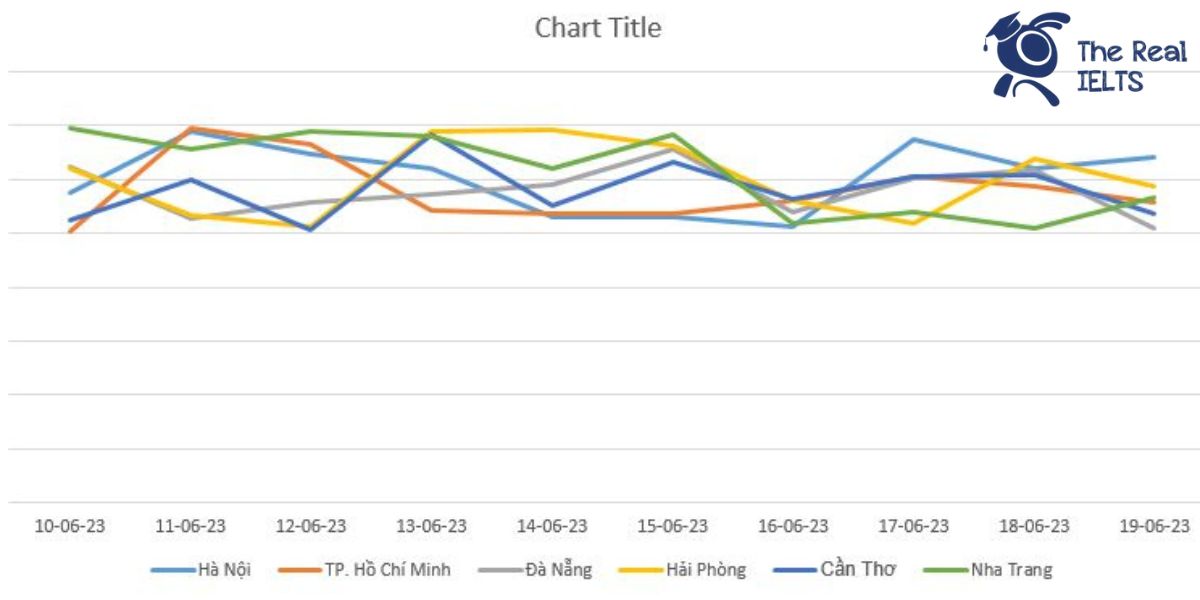Đề thi IELTS Reading có tiêu đề “The Future of Urban Transportation”
Nhớ đọc thêm các bài luyện thi IELTS nhé.
IELTS Reading:”The Future of Urban Transportation“
The Future of Urban Transportation
In the 21st century, urban transportation is undergoing a dramatic transformation. As cities continue to grow, both in terms of population and area, the traditional modes of transportation are proving inadequate. Traffic congestion, air pollution, and the environmental impact of gasoline-powered vehicles have forced urban planners and governments to reconsider how people will move around in the cities of the future. The future of urban transportation is likely to be shaped by three major forces: technological innovation, environmental sustainability, and social equity.
Technological Innovations Driving Change
One of the most significant forces shaping the future of urban transportation is technological innovation. From electric vehicles (EVs) to autonomous cars, new technologies are rapidly changing how people commute. Electric vehicles, for example, are becoming increasingly popular as the world seeks to reduce its carbon footprint. Major automakers are investing heavily in EVs, and governments are offering subsidies to encourage consumers to switch to electric. By 2030, it is expected that electric vehicles will dominate the urban transportation market, drastically reducing greenhouse gas emissions and dependency on fossil fuels.
In addition to electric cars, autonomous or self-driving vehicles are another key technology set to revolutionize city transportation. Autonomous vehicles could significantly reduce the number of accidents caused by human error, which accounts for more than 90% of road accidents globally. These cars, controlled by artificial intelligence, will also have the potential to reduce traffic congestion through more efficient driving and coordination. Companies like Tesla, Waymo, and Uber are leading the charge in developing autonomous driving technologies, and cities are starting to prepare their infrastructure to accommodate these vehicles.
Moreover, the rise of shared mobility platforms is reshaping how people think about owning a vehicle. Car-sharing and ride-hailing services like Uber, Lyft, and Zipcar offer flexible transportation options that are often more convenient and cost-effective than owning a private car. In the future, it is predicted that many people will abandon car ownership altogether, instead opting for on-demand transportation services powered by autonomous and electric vehicles. This shift could free up large amounts of space currently dedicated to parking, which could be repurposed for parks, bike lanes, or other urban infrastructure.
Sustainable Urban Mobility
Environmental sustainability is another major factor driving changes in urban transportation. Cities are some of the largest contributors to greenhouse gas emissions, primarily due to vehicle emissions. To combat climate change, cities around the world are taking steps to promote more sustainable transportation methods.
Public transportation systems, such as buses, trains, and trams, are being modernized to run on cleaner energy sources. Electric buses, for example, are becoming more common in major cities like London, Paris, and Los Angeles. These electric-powered systems produce zero tailpipe emissions, which significantly reduces air pollution and helps cities meet their carbon reduction goals.
Cycling and walking are also being promoted as eco-friendly alternatives to driving. Cities like Copenhagen and Amsterdam have invested heavily in bike-friendly infrastructure, including dedicated bike lanes, bike-sharing programs, and even traffic lights designed specifically for cyclists. In cities with well-developed cycling infrastructure, a significant percentage of the population now commutes by bike, reducing both traffic congestion and air pollution.
Furthermore, urban planners are focusing on the concept of “15-minute cities,” where everything a person needs — work, shopping, entertainment, healthcare, and education — is located within a 15-minute walk or bike ride. This reduces the need for long commutes and encourages residents to use more sustainable transportation methods. Paris, for example, has embraced this model, investing in neighborhood-level infrastructure to support local businesses and reduce reliance on cars.
Social Equity and Accessibility
While technological and environmental advancements are critical, the future of urban transportation must also address issues of social equity and accessibility. Historically, transportation systems have often excluded or underserved low-income and marginalized communities. Many people living in urban areas, especially in the Global South, still lack access to affordable and reliable transportation. The future of urban transportation must ensure that innovations in mobility are accessible to all, not just the wealthy.
Public transit systems, for example, need to be affordable and efficient for everyone. In cities like New York and London, public transportation is relatively expensive, which disproportionately affects low-income populations. To counteract this, some cities are experimenting with fare-free public transportation. Tallinn, the capital of Estonia, was the first city in Europe to introduce free public transport for all residents, and other cities are beginning to follow suit.
Accessibility for people with disabilities is another key issue. As urban transportation systems evolve, they must be designed to accommodate individuals with mobility challenges. This includes not only physical accessibility, such as ramps and elevators, but also digital accessibility, ensuring that transportation apps and payment systems are usable by people with visual or hearing impairments.
Moreover, the rise of electric and autonomous vehicles presents new opportunities and challenges for equity. While these technologies promise cleaner and safer transportation, they are often expensive, potentially widening the gap between those who can afford the latest innovations and those who cannot. Governments and policymakers will need to ensure that the benefits of new transportation technologies are distributed equitably, with subsidies or programs that make these services available to all residents, regardless of income.
Conclusion
The future of urban transportation is being shaped by a combination of technological advances, environmental concerns, and social challenges. While electric and autonomous vehicles promise to reduce emissions and improve safety, cities will also need to focus on making their transportation systems more equitable and accessible. Public transit, cycling, walking, and shared mobility services are likely to become increasingly important in creating cities that are not only efficient but also sustainable and inclusive. As urban areas continue to grow, the decisions made today will determine whether the cities of the future are places where everyone can move around freely and safely, without harming the planet.
Đề bài thi IELTS Reading
1. Multiple Choice Questions (10 câu)
- What is the main reason cities are reconsidering traditional transportation modes?
- A) Rising fuel costs
- B) Traffic congestion and air pollution
- C) Advances in car manufacturing
- D) Population decline in cities
- What is expected to dominate the urban transportation market by 2030?
- A) Autonomous vehicles
- B) Electric vehicles
- C) Gasoline-powered cars
- D) Bicycles
- What is a significant advantage of autonomous vehicles mentioned in the passage?
- A) Reducing human error in accidents
- B) Lower production costs
- C) Higher fuel efficiency
- D) Increasing the need for parking spaces
- What is one of the benefits of shared mobility platforms?
- A) Encourages car ownership
- B) Makes transportation more expensive
- C) Provides flexible transportation options
- D) Increases traffic congestion
- Which cities are cited as leaders in promoting cycling infrastructure?
- A) Paris and London
- B) Copenhagen and Amsterdam
- C) Los Angeles and New York
- D) Tallinn and Tokyo
- What is the main purpose of the “15-minute cities” concept?
- A) To promote the use of electric cars
- B) To reduce reliance on long commutes
- C) To improve cycling infrastructure
- D) To increase car ownership
- What is one potential disadvantage of electric and autonomous vehicles mentioned in the passage?
- A) They increase pollution in urban areas
- B) They are expensive, potentially creating inequality
- C) They cause more accidents than gasoline-powered cars
- D) They require more parking spaces than traditional vehicles
- What is one way governments are supporting the switch to electric vehicles?
- A) Reducing taxes on gasoline
- B) Providing subsidies to consumers
- C) Banning public transportation
- D) Encouraging more traffic congestion
- What percentage of road accidents globally is caused by human error?
- A) 10%
- B) 50%
- C) 70%
- D) Over 90%
- Which city was the first in Europe to introduce free public transportation for residents?
- A) Paris
- B) Tallinn
- C) London
- D) New York
2. True/False/Not Given (5 câu)
- Public transportation in cities like New York is among the cheapest in the world.
- True
- False
- Not Given
- Waymo is a company that focuses on autonomous driving technologies.
- True
- False
- Not Given
- Electric buses produce more emissions than gasoline-powered buses.
- True
- False
- Not Given
- The passage states that only wealthy individuals will benefit from electric and autonomous vehicles.
- True
- False
- Not Given
- The 15-minute city model is only being tested in Europe.
- True
- False
- Not Given
3. Yes/No/Not Given (5 câu)
- The author believes that car ownership will completely disappear in the future.
- Yes
- No
- Not Given
- The author suggests that cycling infrastructure in cities could reduce traffic congestion.
- Yes
- No
- Not Given
- The passage mentions that electric vehicles will completely replace gasoline-powered vehicles by 2025.
- Yes
- No
- Not Given
- The author supports the concept of fare-free public transportation.
- Yes
- No
- Not Given
- The passage suggests that technology alone cannot solve urban transportation challenges.
- Yes
- No
- Not Given
4. Matching Information (5 câu)
Match the following pieces of information with the correct paragraph (A, B, C, or D).
- Describes the introduction of fare-free public transportation.
- Discusses the potential for reduced accidents through automation.
- Explains how autonomous vehicles could reduce traffic congestion.
- Mentions the environmental impact of urban transportation.
- Discusses cycling and walking as alternatives to driving.
5. Matching Headings (5 câu)
Match the following headings with the correct paragraph.
- The impact of technology on transportation.
- Promoting sustainable transportation in cities.
- The importance of social equity in future transportation.
- The role of shared mobility in reducing car ownership.
- How electric vehicles can reduce emissions in cities.
6. Matching Features (5 câu)
Match the features with the cities mentioned.
- Known for its electric bus systems.
- Introduced the concept of 15-minute cities.
- Leading in autonomous vehicle development.
- First to provide free public transportation.
- Heavily invested in cycling infrastructure.
7. Matching Sentence Endings (5 câu)
Complete the sentences by matching the sentence beginnings with the correct endings.
- Public transportation in cities needs to be…
- A) more accessible for people with disabilities.
- B) replaced by electric cars by 2030.
- C) less expensive for low-income residents.
- D) privatized to reduce government expenses.
- Autonomous vehicles can potentially…
- A) eliminate the need for drivers.
- B) cause more accidents due to human error.
- C) replace public transit systems.
- D) increase reliance on fossil fuels.
- Shared mobility platforms help…
- A) reduce traffic congestion.
- B) encourage people to buy more cars.
- C) make cities more dependent on gasoline.
- D) reduce emissions from buses.
- Cycling infrastructure in cities…
- A) helps reduce both traffic and pollution.
- B) is too costly for most governments.
- C) discourages the use of electric cars.
- D) is only effective in Europe.
- The “15-minute city” concept aims to…
- A) increase car usage in urban areas.
- B) make cities more pedestrian-friendly.
- C) provide affordable housing in city centers.
- D) promote car ownership in suburban areas.
Đáp án bài thi IELTS Reading
1. Multiple Choice Questions (10 câu)
- B) Traffic congestion and air pollution
- B) Electric vehicles
- A) Reducing human error in accidents
- C) Provides flexible transportation options
- B) Copenhagen and Amsterdam
- B) To reduce reliance on long commutes
- B) They are expensive, potentially creating inequality
- B) Providing subsidies to consumers
- D) Over 90%
- B) Tallinn
2. True/False/Not Given (5 câu)
- False
- True
- False
- False
- False
3. Yes/No/Not Given (5 câu)
- Not Given
- Yes
- No
- Not Given
- Yes
4. Matching Information (5 câu)
- C) Describes the introduction of fare-free public transportation.
- B) Discusses the potential for reduced accidents through automation.
- B) Explains how autonomous vehicles could reduce traffic congestion.
- A) Mentions the environmental impact of urban transportation.
- C) Discusses cycling and walking as alternatives to driving.
5. Matching Headings (5 câu)
- B) The impact of technology on transportation.
- C) Promoting sustainable transportation in cities.
- D) The importance of social equity in future transportation.
- A) The role of shared mobility in reducing car ownership.
- E) How electric vehicles can reduce emissions in cities.
6. Matching Features (5 câu)
- Los Angeles (electric bus systems)
- Paris (15-minute cities)
- Waymo (autonomous vehicle development)
- Tallinn (free public transportation)
- Copenhagen (cycling infrastructure)
7. Matching Sentence Endings (5 câu)
- C) less expensive for low-income residents.
- A) eliminate the need for drivers.
- A) reduce traffic congestion.
- A) helps reduce both traffic and pollution.
- B) make cities more pedestrian-friendly.
Luyện tập bài khác ở bài viết:”100 bài luyện IELTS Reading 2024 – 2025“















